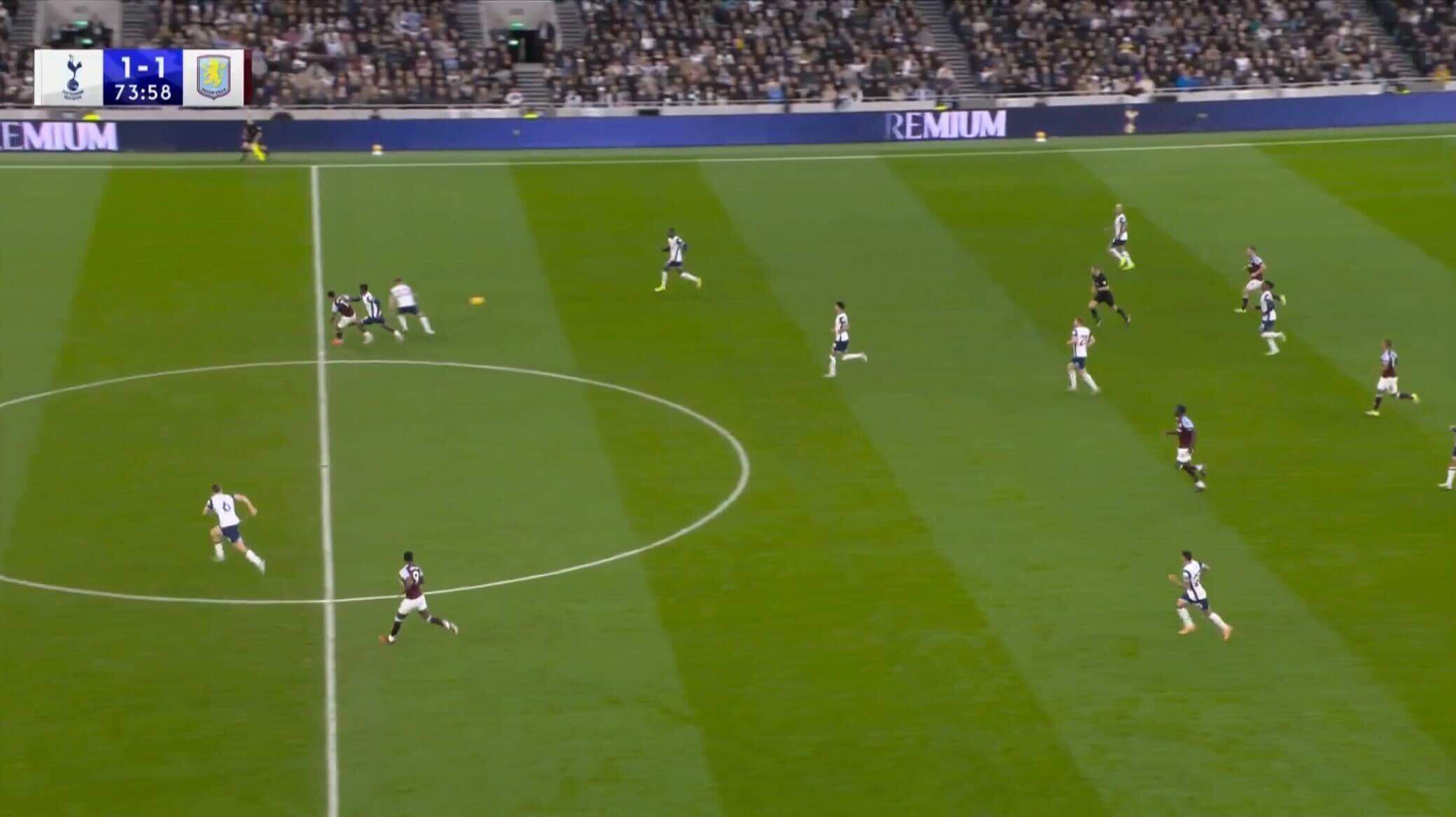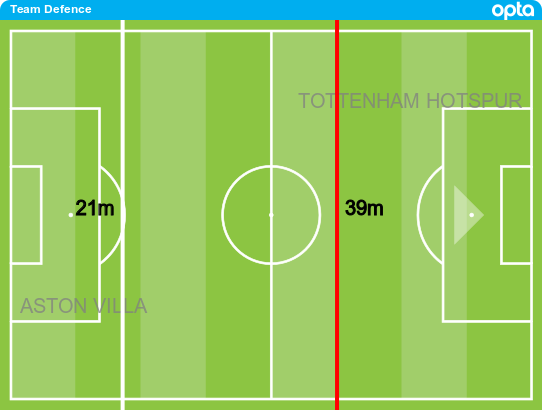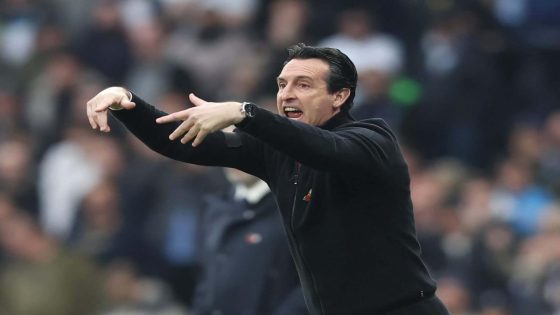You could hear the shouts of anguish from Aston Villa’s analysts in the eight seconds and three passes between Ollie Watkins giving the ball away and Dominic Solanke scoring for Tottenham Hotspur.
Villa were level approaching the final quarter of an hour of the game. The ball was played into the path of Watkins who — knowing Jhon Duran was alongside him and was sniffing the chance of going two against two up top — wanted to attack quickly.

He turned into Ben Davies, attempting to knock the ball past the central defender, only to run into a wall.

Davies’ block spilt the ball towards Pape Matar Sarr, who had space to drive and rip a pass through Villa’s disorganised midfield.

The analysts’ exasperation mirrored that in Villa’s technical area. Unai Emery’s game plan — predicated on deep organisation and limiting space and turnovers — had become transitional in one fleeting, punishing passage. It crystallised the contradictions of Villa’s setup, which is usually clear under Emery.
In his post-match press conference, Emery repeated how “transitions” were fundamental to Tottenham’s attacking patterns. This influenced Villa’s thinking from a defensive standpoint as they sat noticeably deeper out of possession and attempted to reduce space between the lines.
This was demonstrated in both teams’ average possession winning line — how high or deep either regained possession — with Villa provoking turnovers only 21 metres away from their goal.

The conservative blueprint appeared in contrast with Emery’s second-half substitutions, however, with Duran’s entrance — six minutes before Solanke’s first goal — putting the forward next to Watkins. Naturally, the presence of two strikers caused Villa to attack directly and with fewer passes — ordinarily a no-go under Emery.
It appeared a risky substitution to have Watkins and Duran together at that stage of the game, especially away from home to a fellow Champions League contender. The decision was at the expense of Morgan Rogers who, despite the 22-year-old’s protests, Emery felt needed to come off after two thwacks to his legs.
Regardless, Duran was a stylistically contrasting option. Rogers is a ball-carrier, key to Villa transitioning from a crouched deeper shape to driving upfield. Defensively, Rogers plugged the gap behind Watkins — the space where Sarr could progress the ball forward, under no pressure, for the goal.
The call for Duran and Watkins to be paired together comes with drawbacks, which were exposed in a matter of seconds. They are two No 9s who thrive on playing on the last line and occupy similar spaces. The impact any prospective partnership has on Villa’s overall structure, with and without the ball, is acute and requires a balance to be struck.
Emery typically times his substitutions well. Largely owing to Duran’s impact, Villa have scored the most Premier League goals from subs (10) in 2024 and have had the most goal involvements (10 goals, seven assists) from the bench. On this occasion, however, Duran’s arrival had the opposite effect: he registered four touches in 30 minutes and only seemed to exacerbate a dysfunctional second-half performance.
When asked about the thinking behind pairing Duran and Watkins, Emery said: “Because it is a possibility. I have to try to give minutes to those players on the field and how we can get better with those players. It is the process we have and we are building a team. We are trying to get a strong structure in everything. A situation we have to work with is those two strikers. We have to give them chances to get confidence.”

Three substitutes were introduced with 10 minutes left of normal time. This also became a source of frustration for some fans considering that Jaden Philogene, Leon Bailey and Boubacar Kamara had been readied when the score was level, yet found themselves coming on with Villa 3-1 down.
Tottenham scored twice in four minutes to pull the rug from underneath Villa’s feet. Players looked towards the sky and Watkins exchanged words with Lucas Digne; cutting figures far different to the players who had walked confidently down the tunnel at half-time when a goal ahead.
For large periods of the first half Villa adhered to their template in big matches. They understood their defensive responsibilities. Watkins registered only two touches in the opening 25 minutes as Villa granted Tottenham greater possession and territory but restricted chances to long, hopeful shots. And as they did in the same fixture last season, they scored themselves through a set play.
There is a fine line between organisation and passivity though, and Villa increasingly drooped towards the latter. Emery often speaks about his side being the “protagonists” in matches, but they never gave the sense of being on the front foot against Spurs until Duran’s substitution tipped the scale completely in the opposite direction.
Unlike last year — and perhaps influenced by their lead — Villa did not show improved intent early in the second half. Back then, Villa’s substitutions were inspired, offering far more incision and pace while retaining a solid foundation. This time, three minutes after the break, Tottenham scored from, as Emery put it after, “their first action”.
Despite Brennan Johnson’s goal giving renewed momentum and lifting the home support, Villa still had time to stabilise. Alarmingly, they only became more tentative.
Emery might have recognised this and introduced Duran in a bid to encourage more purpose. It didn’t work.
Reflecting the hesitation, which had spread, Johnson skipped around Amadou Onana — Villa’s best player on the day — in additional time. The Belgium international merely poked a foot out and, as a precursor to giving away a potential foul, raised both hands in the air, palms facing outward and gesturing that he had not made contact. In the meantime, Johnson had already sped away with the ball.
James Maddison scored Tottenham’s fourth and Emery retreated to the bench. He stressed the importance of Villa remaining “emotionally balanced” after a second-half thumping, even if the performance and his substitutions appeared deeply uncharacteristic.
(Top photo: Rob Newell/CameraSport via Getty Images)





